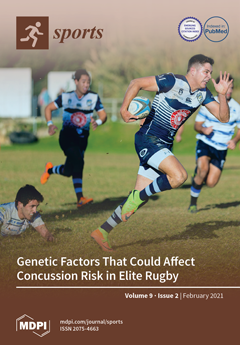The aim of the present study was to assess the validity of verification phase (VP) testing and a 3 min all-out test to determine critical power (CP) in males with obesity. Nine young adult males with a body mass index (BMI) ≥ 30 kg·m
−2 completed a cycle ergometer ramp-style VO
2max test, four randomized VP tests at 80, 90, 100, and 105% of maximum wattage attained during the ramp test, and a 3 min all-out test. There was a significant main effect for VO
2max across all five tests (
p = 0.049). Individually, 8 of 9 participants attained a higher VO
2max (L/min) during a VP test compared to the ramp test. A trend (
p = 0.06) was observed for VO
2max during the 90% VP test (3.61 ± 0.54 L/min) when compared to the ramp test (3.37 ± 0.39 L/min). A significantly higher VO
2max (
p = 0.016) was found in the VP tests that occurred below 130% of CP wattage (N = 15, VO
2max = 3.76 ± 0.52 L/min) compared to those that were above (N = 21, VO
2max = 3.36 ± 0.41 L/min). Our findings suggest submaximal VP tests at 90% may elicit the highest VO
2max in males with obesity and there may be merit in using % of CP wattage to determine optimal VP intensity.
Full article






